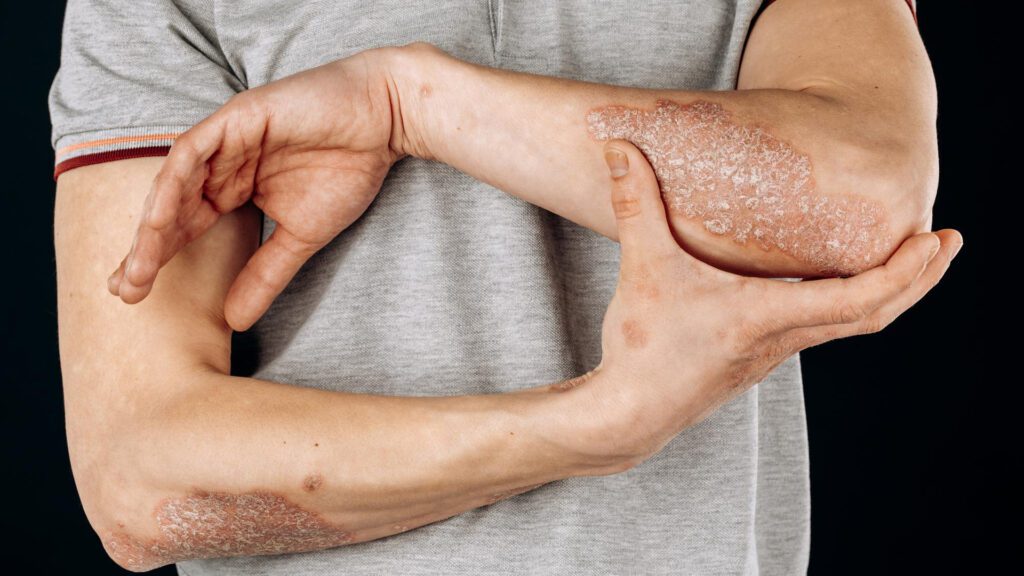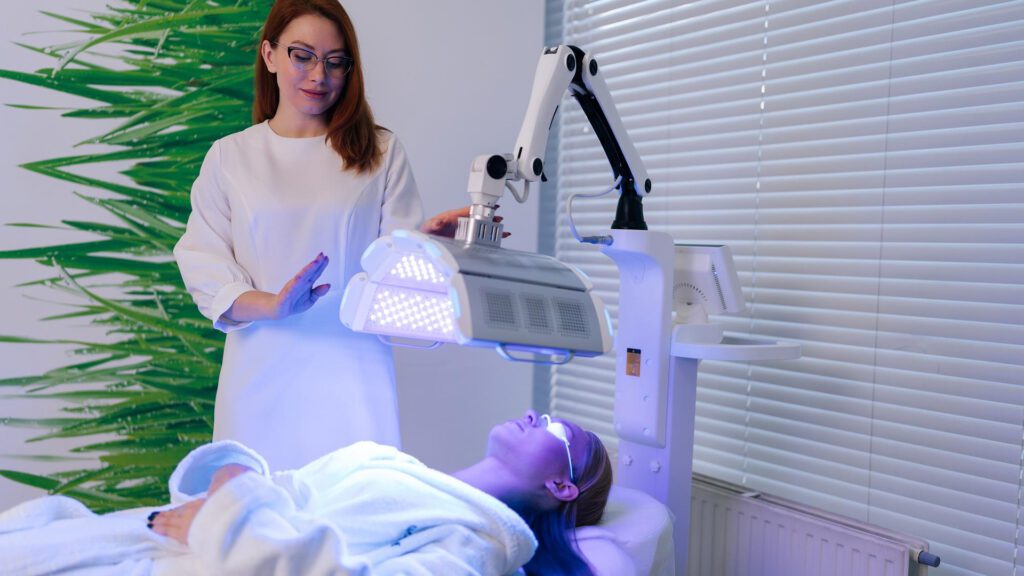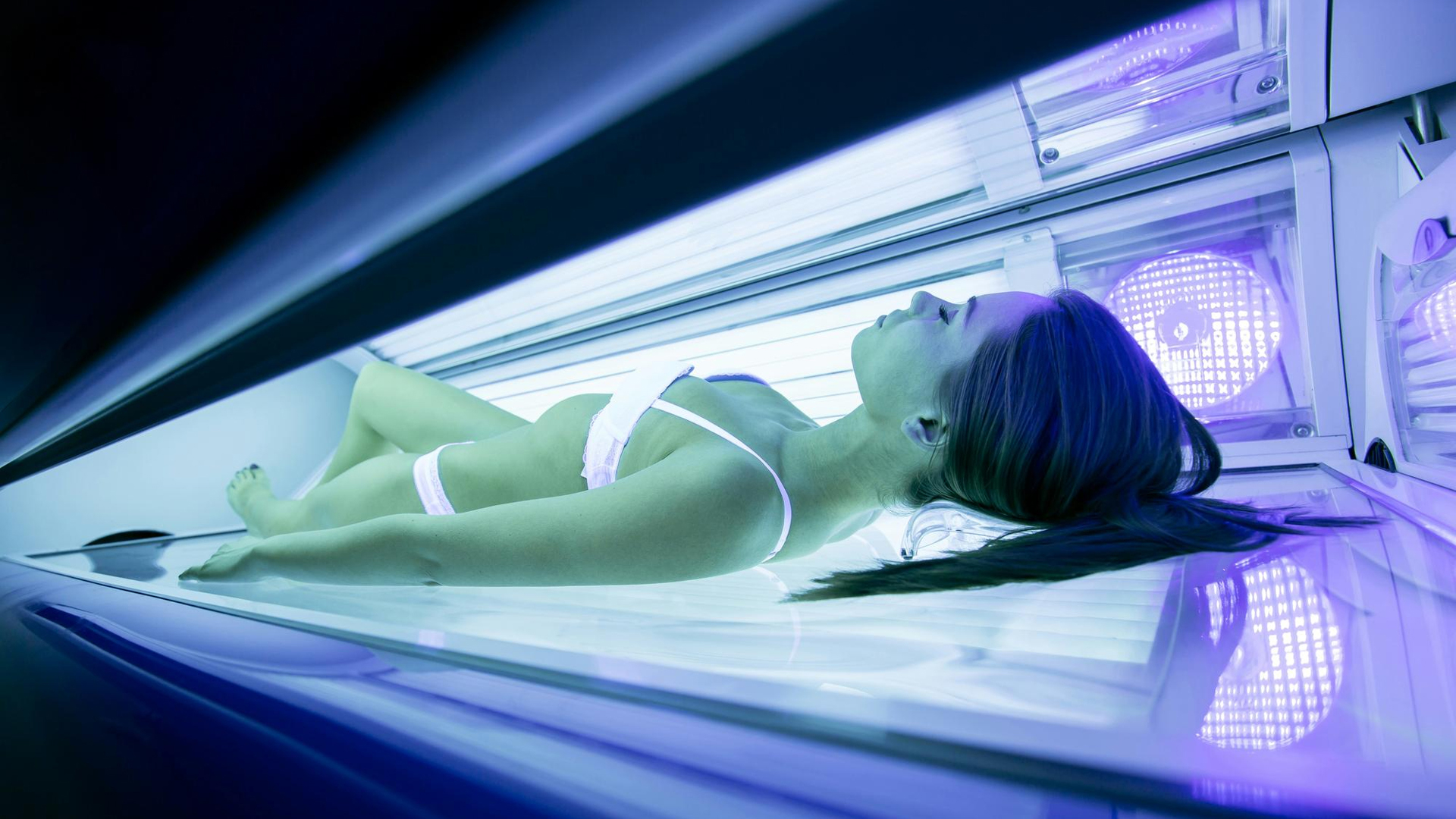Psoriasis is an immune-mediated skin condition that causes raised, itchy skin plaques. It can also affect other areas of the body, such as the joints.
Now, With Kim Kardashian’s latest “advice” to her audience regarding using tanning beds to treat psoriasis, many people are jumping on the idea.
But I am sorry to break it to you: Just because the Kardashians posted a story doesn’t necessarily mean it is authentic!
Understanding Psoriasis and Sunlight
The sun’s ultraviolet rays are made up of UVA and UVB rays. UVB rays can help slow the rapid rate of skin growth and shedding. This means exposure to the sun may clear psoriasis symptoms in some cases. It also makes your body produce more vitamin D.
For people with mild psoriasis, about 30 minutes of exposure at noon may be a good start. People with more severe symptoms may want to start with less and increase their exposure time slowly
However, you should consult with your doctor or a dermatologist before attempting this.
Tanning Beds To Mimic Sunlight
Tanning beds use artificial lights to emit the sun’s UV light. This idea tempts many people with psoriasis because the use of tanning beds seems much easier and on the go, but unfortunately, just because they mimic sunlight doesn’t mean that it’s an effective treatment.
Do Tanning Beds Help Psoriasis? Using Tanning Beds For Psoriasis Treatment

Now, see, here is the catch. Ultraviolet phototherapy can be a possible treatment for psoriasis, but not tanning-based light therapy. According to dermatology, to treat psoriasis, you need UVB light, and that too at a specific wavelength of 311.
Tanning beds, on the other hand, don’t even provide the UVB light required to manage psoriasis; they only work with UVA light. Hence, tanning beds won’t treat your psoriasis plaque but might also increase your chances of skin cancer and skin aging.
In 2009, the World Health Organization classified UV-emitting indoor tanning devices as having the highest level of cancer risk, placing them in the same category as tobacco and asbestos.
Moreover, if you use indoor tanning devices before age 35, your melanoma risk increases by 59 percent, squamous cell carcinoma risk increases by 67 percent, and basal cell carcinoma risk increases by 29 percent.
The Other Risks Associated With Using Tanning Beds
- Skin Cancer Concerns
- Accelerated Skin Aging
- Eye Damage
- Weakened Immune System
Safe Alternatives for Psoriasis Relief
Now that I have given you the disclaimer regarding using tanning beds to improve psoriasis, it’s also my duty to inform you of safer and more effective alternatives.
Natural sunlight therapy
You can use the ultraviolet light that comes naturally from sunlight to treat psoriasis. Aim to spend at least 5 to 10 minutes in the midday sun daily. Don’t stay out for very long, though. Too much sun exposure can also cause psoriasis to flare up.
People with psoriasis are generally advised to apply fragrance-free, mineral-based sunscreen to their entire body before sitting in the sun. This helps lower the risk of skin cancer, especially considering that certain psoriasis medications can increase the risk.
UVB phototherapy
This therapy exposes you to UVB light in a controlled environment for short periods. It uses limited wavelengths to decrease the risk of sunburn and skin damage.
Different types of UVB therapy can target a specific area or the whole body. However, with this therapy, your psoriasis may worsen before it improves.
PUVA treatment
For psoralen UVA (PUVA) treatment, the medication psoralen is used alongside UVA light therapy. Psoralen can be taken orally or topically. The combination of psoralen with UVA light slows the overproduction of skin cells related to psoriasis.
I must mention that this type of light therapy is only used for people with more extreme psoriasis and is not recommended for moderately psoriatic conditions.
Laser treatment
A healthcare professional may prescribe administering high levels of UVB light via a laser to treat specific areas affected by psoriasis. You may receive a course of laser treatment over several days, weeks, or months.
Each type of light or laser therapy has its benefits and side effects. You can work with a healthcare professional to choose the best option.
Consult Your Doctor Regarding Using Phototherapy

If you’re still considering using a tanning bed for your psoriasis, it’s important to talk to your doctor first. They can help you better understand the risks and benefits.
They might also suggest other treatments that might be safer and more effective for you.
Conclusion: Tanning Beds Are Not the Best Choice
Conversely, tanning beds are not the best way to help your psoriasis. They can be dangerous and might even make your skin worse.
Talking to a doctor about the best way to care for your skin is always a good idea, especially if you have psoriasis.

